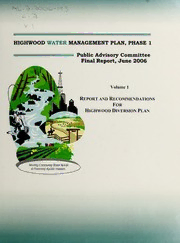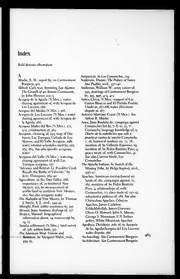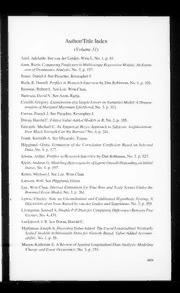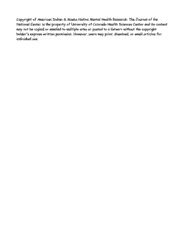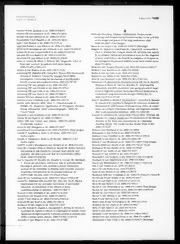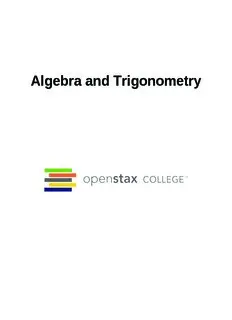
Preview Algebra and Trigonometry
Algebra and Trigonometry OpenStax College Rice University 6100 Main Street MS-375 Houston, Texas 77005 To learn more about OpenStax College, visit http://openstaxcollege.org. Individual print copies and bulk orders can be purchased through our website. © 2015 by Rice University. The textbook content was produced by OpenStax College and is licensed under a Creative Commons Attribution 4.0 International License. Under this license, any user of the textbook or the textbook contents herein must provide proper attribution as follows: - If you redistribute this textbook in a digital format (including but not limited to EPUB, PDF, and HTML), then you must retain on every page view the following attribution: Download for free at openstaxcollege.org/textbooks/college-algebra- and-trigonometry. - If you redistribute this textbook in a print format, then you must include on every physical page the following attribution: Download for free at openstaxcollege.org/textbooks/college-algebra-and-trigonometry. - If you redistribute part of this textbook, then you must display on every digital format page view (including but not limited to EPUB, PDF, and HTML) and on every physical printed page the following attribution: Download for free at openstaxcollege.org/textbooks/college-algebra-and-trigonometry. - If you use this textbook as a bibliographic reference, then you should cite it as follows: OpenStax College, Algebra and Trigonometry. OpenStax College. 13 February 2015. <openstaxcollege.org/textbooks/college-algebra-and-trigonometry>. The OpenStax College name, OpenStax College logo, OpenStax College book covers, Connexions name, and Connexions logo are not subject to the license and may not be reproduced without the prior and express written consent of Rice University. For questions regarding this license, please contact partners@openstaxcollege.org. ISBN-10 1938168372 ISBN-13 978-1-938168-37-6 Revision AT-1-001-AS OpenStax College OpenStax College is a non-profit organization committed to improving student access to quality learning materials. Our free textbooks are developed and peer-reviewed by educators to ensure they are readable, accurate, and meet the scope and sequence requirements of modern college courses. Through our partnerships with companies and foundations committed to reducing costs for students, OpenStax College is working to improve access to higher education for all. OpenStax CNX The technology platform supporting OpenStax College is OpenStax CNX (http://cnx.org), one of the world’s first and largest open- education projects. OpenStax CNX provides students with free online and low-cost print editions of the OpenStax College library and provides instructors with tools to customize the content so that they can have the perfect book for their course. Rice University OpenStax College and OpenStax CNX are initiatives of Rice University. As a leading research university with a distinctive commitment to undergraduate education, Rice University aspires to path-breaking research, unsurpassed teaching, and contributions to the betterment of our world. It seeks to fulfill this mission by cultivating a diverse community of learning and discovery that produces leaders across the spectrum of human endeavor. Foundation Support OpenStax College is grateful for the tremendous support of our sponsors. Without their strong engagement, the goal of free access to high-quality textbooks would remain just a dream. Laura and John Arnold Foundation (LJAF) actively seeks opportunities to invest in organizations and thought leaders that have a sincere interest in implementing fundamental changes that not only yield immediate gains, but also repair broken systems for future generations. LJAF currently focuses its strategic investments on education, criminal justice, research integrity, and public accountability. The William and Flora Hewlett Foundation has been making grants since 1967 to help solve social and environmental problems at home and around the world. The Foundation concentrates its resources on activities in education, the environment, global development and population, performing arts, and philanthropy, and makes grants to support disadvantaged communities in the San Francisco Bay Area. Guided by the belief that every life has equal value, the Bill & Melinda Gates Foundation works to help all people lead healthy, productive lives. In developing countries, it focuses on improving people’s health with vaccines and other life-saving tools and giving them the chance to lift themselves out of hunger and extreme poverty. In the United States, it seeks to significantly improve education so that all young people have the opportunity to reach their full potential. Based in Seattle, Washington, the foundation is led by CEO Jeff Raikes and Co-chair William H. Gates Sr., under the direction of Bill and Melinda Gates and Warren Buffett. The Maxfield Foundation supports projects with potential for high impact in science, education, sustainability, and other areas of social importance. Our mission at the Twenty Million Minds Foundation is to grow access and success by eliminating unnecessary hurdles to affordability. We support the creation, sharing, and proliferation of more effective, more affordable educational content by leveraging disruptive technologies, open educational resources, and new models for collaboration between for-profit, nonprofit, and public entities. Table of Contents Preface . . . . . . . . . . . . . . . . . . . . . . . . . . . . . . . . . . . . . . . . . . . . . . . . . . . 1 Chapter1: Prerequisites . . . . . . . . . . . . . . . . . . . . . . . . . . . . . . . . . . . . . . . . . 9 1.1 Real Numbers: Algebra Essentials . . . . . . . . . . . . . . . . . . . . . . . . . . . . . . . 10 1.2 Exponents and Scientific Notation . . . . . . . . . . . . . . . . . . . . . . . . . . . . . . . 32 1.3 Radicals and Rational Expressions . . . . . . . . . . . . . . . . . . . . . . . . . . . . . . 54 1.4 Polynomials . . . . . . . . . . . . . . . . . . . . . . . . . . . . . . . . . . . . . . . . . . 67 1.5 Factoring Polynomials . . . . . . . . . . . . . . . . . . . . . . . . . . . . . . . . . . . . . 78 1.6 Rational Expressions . . . . . . . . . . . . . . . . . . . . . . . . . . . . . . . . . . . . . . 89 Chapter2: Equations and Inequalities . . . . . . . . . . . . . . . . . . . . . . . . . . . . . . . . 107 2.1 The Rectangular Coordinate Systems and Graphs . . . . . . . . . . . . . . . . . . . . . . 108 2.2 Linear Equations in One Variable . . . . . . . . . . . . . . . . . . . . . . . . . . . . . . . 129 2.3 Models and Applications . . . . . . . . . . . . . . . . . . . . . . . . . . . . . . . . . . . . 149 2.4 Complex Numbers . . . . . . . . . . . . . . . . . . . . . . . . . . . . . . . . . . . . . . . 160 2.5 Quadratic Equations . . . . . . . . . . . . . . . . . . . . . . . . . . . . . . . . . . . . . . 172 2.6 Other Types of Equations . . . . . . . . . . . . . . . . . . . . . . . . . . . . . . . . . . . 189 2.7 Linear Inequalities and Absolute Value Inequalities . . . . . . . . . . . . . . . . . . . . . . 204 Chapter3: Functions . . . . . . . . . . . . . . . . . . . . . . . . . . . . . . . . . . . . . . . . . . 225 3.1 Functions and Function Notation . . . . . . . . . . . . . . . . . . . . . . . . . . . . . . . . 226 3.2 Domain and Range . . . . . . . . . . . . . . . . . . . . . . . . . . . . . . . . . . . . . . 256 3.3 Rates of Change and Behavior of Graphs . . . . . . . . . . . . . . . . . . . . . . . . . . . 282 3.4 Composition of Functions . . . . . . . . . . . . . . . . . . . . . . . . . . . . . . . . . . . 300 3.5 Transformation of Functions . . . . . . . . . . . . . . . . . . . . . . . . . . . . . . . . . . 317 3.6 Absolute Value Functions . . . . . . . . . . . . . . . . . . . . . . . . . . . . . . . . . . . 353 3.7 Inverse Functions . . . . . . . . . . . . . . . . . . . . . . . . . . . . . . . . . . . . . . . 362 Chapter4: Linear Functions . . . . . . . . . . . . . . . . . . . . . . . . . . . . . . . . . . . . . . 393 4.1 Linear Functions . . . . . . . . . . . . . . . . . . . . . . . . . . . . . . . . . . . . . . . . 394 4.2 Modeling with Linear Functions . . . . . . . . . . . . . . . . . . . . . . . . . . . . . . . . 437 4.3 Fitting Linear Models to Data . . . . . . . . . . . . . . . . . . . . . . . . . . . . . . . . . 451 Chapter5: Polynomial and Rational Functions . . . . . . . . . . . . . . . . . . . . . . . . . . . . 475 5.1 Quadratic Functions . . . . . . . . . . . . . . . . . . . . . . . . . . . . . . . . . . . . . . 476 5.2 Power Functions and Polynomial Functions . . . . . . . . . . . . . . . . . . . . . . . . . . 499 5.3 Graphs of Polynomial Functions . . . . . . . . . . . . . . . . . . . . . . . . . . . . . . . . 523 5.4 Dividing Polynomials . . . . . . . . . . . . . . . . . . . . . . . . . . . . . . . . . . . . . . 550 5.5 Zeros of Polynomial Functions . . . . . . . . . . . . . . . . . . . . . . . . . . . . . . . . . 562 5.6 Rational Functions . . . . . . . . . . . . . . . . . . . . . . . . . . . . . . . . . . . . . . . 579 5.7 Inverses and Radical Functions . . . . . . . . . . . . . . . . . . . . . . . . . . . . . . . . 608 5.8 Modeling Using Variation . . . . . . . . . . . . . . . . . . . . . . . . . . . . . . . . . . . . 624 Chapter6: Exponential and Logarithmic Functions . . . . . . . . . . . . . . . . . . . . . . . . . 643 6.1 Exponential Functions . . . . . . . . . . . . . . . . . . . . . . . . . . . . . . . . . . . . . 644 6.2 Graphs of Exponential Functions . . . . . . . . . . . . . . . . . . . . . . . . . . . . . . . 666 6.3 Logarithmic Functions . . . . . . . . . . . . . . . . . . . . . . . . . . . . . . . . . . . . . 685 6.4 Graphs of Logarithmic Functions . . . . . . . . . . . . . . . . . . . . . . . . . . . . . . . 697 6.5 Logarithmic Properties . . . . . . . . . . . . . . . . . . . . . . . . . . . . . . . . . . . . . 722 6.6 Exponential and Logarithmic Equations . . . . . . . . . . . . . . . . . . . . . . . . . . . . 737 6.7 Exponential and Logarithmic Models . . . . . . . . . . . . . . . . . . . . . . . . . . . . . 753 6.8 Fitting Exponential Models to Data . . . . . . . . . . . . . . . . . . . . . . . . . . . . . . . 774 Chapter7: The Unit Circle: Sine and Cosine Functions . . . . . . . . . . . . . . . . . . . . . . . 809 7.1 Angles . . . . . . . . . . . . . . . . . . . . . . . . . . . . . . . . . . . . . . . . . . . . . 810 7.2 Right Triangle Trigonometry . . . . . . . . . . . . . . . . . . . . . . . . . . . . . . . . . . 835 7.3 Unit Circle . . . . . . . . . . . . . . . . . . . . . . . . . . . . . . . . . . . . . . . . . . . 850 7.4 The Other Trigonometric Functions . . . . . . . . . . . . . . . . . . . . . . . . . . . . . . 873 Chapter8: Periodic Functions . . . . . . . . . . . . . . . . . . . . . . . . . . . . . . . . . . . . . 901 8.1 Graphs of the Sine and Cosine Functions . . . . . . . . . . . . . . . . . . . . . . . . . . . 902 8.2 Graphs of the Other Trigonometric Functions . . . . . . . . . . . . . . . . . . . . . . . . . 925 8.3 Inverse Trigonometric Functions . . . . . . . . . . . . . . . . . . . . . . . . . . . . . . . . 950 Chapter9: Trigonometric Identities and Equations . . . . . . . . . . . . . . . . . . . . . . . . . 975 9.1 Solving Trigonometric Equations with Identities . . . . . . . . . . . . . . . . . . . . . . . . 976 9.2 Sum and Difference Identities . . . . . . . . . . . . . . . . . . . . . . . . . . . . . . . . . 989 9.3 Double-Angle, Half-Angle, and Reduction Formulas . . . . . . . . . . . . . . . . . . . . . 1007 9.4 Sum-to-Product and Product-to-Sum Formulas . . . . . . . . . . . . . . . . . . . . . . . 1022 9.5 Solving Trigonometric Equations . . . . . . . . . . . . . . . . . . . . . . . . . . . . . . . 1031 Chapter10: Further Applications of Trigonometry . . . . . . . . . . . . . . . . . . . . . . . . . 1059 10.1 Non-right Triangles: Law of Sines . . . . . . . . . . . . . . . . . . . . . . . . . . . . . 1060 10.2 Non-right Triangles: Law of Cosines . . . . . . . . . . . . . . . . . . . . . . . . . . . . 1079 10.3 Polar Coordinates . . . . . . . . . . . . . . . . . . . . . . . . . . . . . . . . . . . . . . 1095 10.4 Polar Coordinates: Graphs . . . . . . . . . . . . . . . . . . . . . . . . . . . . . . . . . 1111 10.5 Polar Form of Complex Numbers . . . . . . . . . . . . . . . . . . . . . . . . . . . . . . 1134 10.6 Parametric Equations . . . . . . . . . . . . . . . . . . . . . . . . . . . . . . . . . . . . 1148 10.7 Parametric Equations: Graphs . . . . . . . . . . . . . . . . . . . . . . . . . . . . . . . 1164 10.8 Vectors . . . . . . . . . . . . . . . . . . . . . . . . . . . . . . . . . . . . . . . . . . . 1178 Chapter11: Systems of Equations and Inequalities . . . . . . . . . . . . . . . . . . . . . . . . 1211 11.1 Systems of Linear Equations: Two Variables . . . . . . . . . . . . . . . . . . . . . . . . 1212 11.2 Systems of Linear Equations: Three Variables . . . . . . . . . . . . . . . . . . . . . . . 1233 11.3 Systems of Nonlinear Equations and Inequalities: Two Variables . . . . . . . . . . . . . 1246 11.4 Partial Fractions . . . . . . . . . . . . . . . . . . . . . . . . . . . . . . . . . . . . . . . 1260 11.5 Matrices and Matrix Operations . . . . . . . . . . . . . . . . . . . . . . . . . . . . . . . 1272 11.6 Solving Systems with Gaussian Elimination . . . . . . . . . . . . . . . . . . . . . . . . 1286 11.7 Solving Systems with Inverses . . . . . . . . . . . . . . . . . . . . . . . . . . . . . . . 1301 11.8 Solving Systems with Cramer's Rule . . . . . . . . . . . . . . . . . . . . . . . . . . . . 1317 Chapter12: Analytic Geometry . . . . . . . . . . . . . . . . . . . . . . . . . . . . . . . . . . . 1341 12.1 The Ellipse . . . . . . . . . . . . . . . . . . . . . . . . . . . . . . . . . . . . . . . . . 1342 12.2 The Hyperbola . . . . . . . . . . . . . . . . . . . . . . . . . . . . . . . . . . . . . . . 1364 12.3 The Parabola . . . . . . . . . . . . . . . . . . . . . . . . . . . . . . . . . . . . . . . . 1386 12.4 Rotation of Axes . . . . . . . . . . . . . . . . . . . . . . . . . . . . . . . . . . . . . . 1404 12.5 Conic Sections in Polar Coordinates . . . . . . . . . . . . . . . . . . . . . . . . . . . . 1422 Chapter13: Sequences, Probability, and Counting Theory . . . . . . . . . . . . . . . . . . . . 1445 13.1 Sequences and Their Notations . . . . . . . . . . . . . . . . . . . . . . . . . . . . . . 1446 13.2 Arithmetic Sequences . . . . . . . . . . . . . . . . . . . . . . . . . . . . . . . . . . . 1463 13.3 Geometric Sequences . . . . . . . . . . . . . . . . . . . . . . . . . . . . . . . . . . . 1476 13.4 Series and Their Notations . . . . . . . . . . . . . . . . . . . . . . . . . . . . . . . . . 1487 13.5 Counting Principles . . . . . . . . . . . . . . . . . . . . . . . . . . . . . . . . . . . . . 1502 13.6 Binomial Theorem . . . . . . . . . . . . . . . . . . . . . . . . . . . . . . . . . . . . . 1514 13.7 Probability . . . . . . . . . . . . . . . . . . . . . . . . . . . . . . . . . . . . . . . . . . 1522 AAppendix . . . . . . . . . . . . . . . . . . . . . . . . . . . . . . . . . . . . . . . . . . . . . . 1543 Index . . . . . . . . . . . . . . . . . . . . . . . . . . . . . . . . . . . . . . . . . . . . . . . . . . 1555 This content is available for free at https://cnx.org/content/col11758/1.5 Preface 1 PREFACE WelcometoAlgebraandTrigonometry,anOpenStaxCollegeresource.Thistextbookhasbeencreatedwithseveralgoalsin mind:accessibility,customization,andstudentengagement—allwhileencouragingstudentstowardhighlevelsofacademic scholarship.Instructorsandstudentsalikewillfindthatthistextbookoffersastrongfoundationinalgebraandtrigonometry in an accessible format. About OpenStax College OpenStax College is a non-profit organization committed to improving student access to quality learning materials. Our freetextbooksgothrougharigorouseditorialpublishingprocess.Ourtextsaredevelopedandpeer-reviewedbyeducators to ensure they are readable, accurate, and meet the scope and sequence requirements of today’s college courses. Unlike traditional textbooks,OpenStaxCollege resourcesliveonlineandareownedbythecommunity ofeducators usingthem. Throughourpartnershipswithcompaniesandfoundationscommittedtoreducingcostsforstudents,OpenStaxCollegeis working to improve access to higher education for all. OpenStax College is an initiative of Rice University and is made possiblethroughthegeneroussupportofseveralphilanthropicfoundations.OpenStaxCollegetextbooksareusedatmany colleges and universities around the world. Please go to https://openstaxcollege.org/pages/adoptions to see our rapidly expanding number of adoptions. About OpenStax College’s Resources OpenStaxCollegeresourcesprovidequalityacademicinstruction.Threekeyfeaturessetourmaterialsapartfromothers: theycanbecustomizedbyinstructorsforeachclass,theyarea"living"resourcethatgrowsonlinethroughcontributions from educators, and they are available free or for minimal cost. Customization OpenStax College learning resources are designed to be customized for each course. Our textbooks provide a solid foundationonwhichinstructorscanbuild,andourresourcesareconceivedandwrittenwithflexibilityinmind.Instructors canselectthesectionsmostrelevanttotheircurriculaandcreateatextbookthatspeaksdirectlytotheneedsoftheirclasses and student body. Teachers are encouraged to expand on existing examples by adding unique context via geographically localized applications and topical connections. Algebra and Trigonometry can be easily customized using our online platform (http://cnx.org/content/col11758/latest/). Simplyselectthecontentmostrelevanttoyourcurrentsemesterandcreateatextbookthatspeaksdirectlytotheneedsof yourclass.AlgebraandTrigonometryisorganizedasacollectionofsectionsthatcanberearranged,modified,andenhanced throughlocalized examples ortoincorporate aspecific themetoyourcourse.Thiscustomization featurewillensurethat your textbook truly reflects the goals of your course. Curation To broaden access and encourage community curation, Algebra and Trigonometry is “open source” licensed under a Creative Commons Attribution (CC-BY) license. The mathematics community is invited to submit feedback to enhance and strengthen the material and keep it current and relevant for today’s students. Submit your suggestions to info@openstaxcollege.org, and check in on edition status, alternate versions, errata, and news on the StaxDash at http://openstaxcollege.org. Cost Our textbooks are available for free online, and in low-cost print and e-book editions. About Algebra and Trigonometry Written and reviewed by a team of highly experienced instructors, Algebra and Trigonometry provides a comprehensive andmulti-layeredexplorationofalgebraicprinciples.Thetextissuitableforatypicalintroductoryalgebracourse,andwas developed to be used flexibly. While the breadth of topics may go beyond what an instructor would cover, the modular approach and the richness of content ensures that the book meets the needs of a variety of programs. Algebra and Trigonometry guides and supports students with differing levels of preparation and experience with mathematics. Ideas are presented as clearly as possible, and progress to more complex understandings with considerable 2 Preface reinforcement along the way. A wealth of examples – usually several dozen per chapter – offer detailed, conceptual explanations,inordertobuildinstudentsastrong,cumulativefoundationinthematerialbeforeaskingthemtoapplywhat they’ve learned. Coverage and Scope Indeterminingtheconcepts,skills,andtopicstocover,weengageddozensofhighlyexperiencedinstructorswitharangeof studentaudiences.Theresultingscopeandsequenceproceedslogicallywhileallowingforasignificantamountofflexibility in instruction. Chapters 1 and 2 provide both a review and foundation for study of Functions that begins in Chapter 3. The authors recognizethatwhilesomeinstitutionsmayfindthismaterialaprerequisite,otherinstitutionshavetoldusthattheyhavea cohort that need the prerequisite skills built into the course. Chapter 1: Prerequisites Chapter 2: Equations and Inequalities Chapters 3-6: The Algebraic Functions Chapter 3: Functions Chapter 4: Linear Functions Chapter 5: Polynomial and Rational Functions Chapter 6: Exponential and Logarithm Functions Chapters 7-10: A Study of Trigonometry Chapter 7: The Unit Circle: Sine and Cosine Functions Chapter 8: Periodic Functions Chapter 9: Trigonometric Identities and Equations Chapter 10: Further Applications of Trigonometry Chapters 11-13: Further Study in Algebra and Trigonometry Chapter 11: Systems of Equations and Inequalities Chapter 12: Analytic Geometry Chapter 13: Sequences, Probability, and Counting Theory All chapters are broken down into multiple sections, the titles of which can be viewed in the Table of Contents. Development Overview OpenstaxAlgebraandTrigonometry istheproductofacollaborative effortbyagroupofdedicated authors,editors,and instructorswhosecollectivepassionforthisprojecthasresultedinatextthatisremarkablyunifiedinpurposeandvoice. SpecialthanksisduetoourLeadAuthor,JayAbramsonofArizonaStateUniversity,whoprovidedtheoverallvisionfor thebookandoversawthedevelopmentofeachandeverychapter,drawinguptheinitialblueprint,readingnumerousdrafts, and assimilating field reviews into actionable revision plans for our authors and editors. Thecollectiveexperienceofourauthorteamallowedustopinpointthesubtopics,exceptions,andindividualconnections thatgivestudentsthemosttrouble.Andsothetextbookisrepletewithwell-designedfeaturesandhighlights,whichhelp students overcome these barriers. As the students read and practice, they are coached in methods of thinking through problems and internalizing mathematical processes. Forexample,narrativetextisoftenfollowedwiththe“HowTo”feature,whichsummarizesthepresentationintoaseries ofdistinct steps.Thisapproach addresses varyinglearning styles, andmodels forstudents animportant learning skill for future studies. Furthermore, the extensive graphical representations immediately connect concepts with visuals. Accuracy of the Content We understand that precision and accuracy are imperatives in mathematics, and undertook a dedicated accuracy program led by experienced faculty. 1. Each chapter’s manuscript underwent rounds of review and revision by a panel of active instructors. 2. Then, prior to publication, a separate team of experts checked all text, examples, and graphics for mathematical accuracy; multiple reviewers were assigned to each chapter to minimize the chances of any error escaping notice. This content is available for free at https://cnx.org/content/col11758/1.5 Preface 3 3. AthirdteamofexpertswasresponsiblefortheaccuracyoftheAnswerKey,dutifullyre-workingeverysolutionto eradicateanylingeringerrors.Finally,theeditorialteamconductedamulti-roundpost-productionreviewtoensure the integrity of the content in its final form. The Solutions Manual, which was written and developed after the Student Edition, has also been rigorously checked for accuracy following a process similar to that described above. Incidentally, the act of writing out solutions step-by-step served as yet another round of validation for the Answer Key in the back of the Student Edition. In spite of the efforts described above, we acknowledge the possibility that—as with any textbook—some errata may have been missed. We encourage users to report errors via ourErrata (https://openstaxcollege.org/errata)page. Pedagogical Foundations and Features Learning Objectives Eachchapterisdividedintomultiplesections(ormodules),eachofwhichisorganizedaroundasetoflearningobjectives. Thelearningobjectivesarelistedexplicitlyatthebeginningofeachsection,andarethefocalpointofeveryinstructional element Narrative text Narrative text is used to introduce key concepts, terms, and definitions, to provide real-world context, and to provide transitionsbetweentopicsandexamples.Throughoutthisbook,werelyonafewbasicconventionstohighlightthemost important ideas: Key terms are boldfaced, typically when first introduced and/or when formally defined Key concepts and definitions are called out in a blue box for easy reference. Key equations, formulas, theorems, identities, etc. are assigned a number, which appears near the right margin. Occasionally the text may refer back to an equation or formula by its number. Examples Eachlearningobjectiveissupportedbyoneormoreworkedexamples,whichdemonstratetheproblem-solvingapproaches that students must master. The multiple Examples model different approaches to the same type of problem, or introduce similar problems of increasing complexity. All Examples follow a simple two- or three-part format. The question clearly lays out a mathematical problem to solve. The Solution walks through the steps, usually providing context for the approach—in other words, why the instructor is solvingtheprobleminaspecificmanner.Finally,theAnalysis(forselectexamples)reflectsonthebroaderimplicationsof the Solution just shown. Examples are followed by a “Try It,” question, as explained below. Figures OpenstaxAlgebraandTrigonometrycontainsfiguresandillustrations,thevastmajorityofwhicharegraphsanddiagrams. Art throughout the text adheres to a clear, understated style, drawing the eye to the most important information in each figurewhileminimizingvisualdistractions.Colorcontrastisemployedwithdiscretiontodistinguishbetweenthedifferent functions or features of a graph. Supporting Features Four unobtrusive but important features, each marked by a distinctive icon, contribute to and check understanding. 4 Preface A“HowTo”isalistofstepsnecessarytosolveacertaintypeofproblem.AHowTotypicallyprecedesan Example that proceeds to demonstrate the steps in action. A“TryIt”exerciseimmediatelyfollowsanExampleorasetofrelatedExamples,providingthestudentwith an immediate opportunity to solve a similar problem. In the Web View version of the text, students can click an Answer linkdirectlybelowthequestiontochecktheirunderstanding.InthePDF,answerstotheTry-Itexercisesarelocatedinthe Answer Key. AQ&Amayappearatanypointinthenarrative,butmostoftenfollowsanExample.Thisfeaturepre-empts misconceptions by posing a commonly asked yes/no question, followed by a detailed answer and explanation. The “Media” icon appears at the conclusion of each section, just prior to the Section Exercises. This icon marks a list of links to online video tutorials that reinforce the concepts and skills introduced in the section. Disclaimer:Whilewehaveselectedtutorialsthatcloselyaligntoourlearningobjectives,wedidnotproducethesetutorials, norweretheyspecificallyproducedortailoredtoaccompanyOpenstaxAlgebraandTrigonometry.Wearedeeplygrateful toJamesSousaforcompilinghisincrediblyrobustandexcellentlibraryofvideotutorials,whichhehasmadeavailableto thepublicunderaCC-BY-SAlicenseathttp://mathispower4u.yolasite.com/.Mostorallofthevideostowhichwelinkin our “Media” feature (plus many more) are found in the Algebra 2 and Trigonometry video libraries at the above site. Section Exercises Each section of every chapter concludes with a well-rounded set of exercises that can be assigned as homework or used selectivelyforguidedpractice.Withover6300exercisesacrossthe13chapters,instructorsshouldhaveplentytochoose from[1]. Section Exercises are organized by question type, and generally appear in the following order: Verbalquestions assess conceptual understanding of key terms and concepts. Algebraicproblems require students to apply algebraic manipulations demonstrated in the section. Graphicalproblems assess students’ ability to interpret or produce a graph. Numericproblems require the student perform calculations or computations. Technologyproblemsencourageexplorationthroughuseofagraphingutility,eithertovisualizeorverifyalgebraic results or to solve problems via an alternative to the methods demonstrated in the section. ExtensionsposeproblemsmorechallengingthantheExamplesdemonstratedinthesection.Theyrequirestudents to synthesize multiple learning objectives or apply critical thinking to solve complex problems. Real-World Applications present realistic problem scenarios from fields such as physics, geology, biology, finance, and the social sciences. Chapter Review Features Each chapter concludes with a review of the most important takeaways, as well as additional practice problems that students can use to prepare for exams. Key Termsprovides a formal definition for each bold-faced term in the chapter. 1. 6,367 total exercises. Includes Chapter Reviews and Practice Tests. This content is available for free at https://cnx.org/content/col11758/1.5
The list of books you might like

Mind Management, Not Time Management

Do Epic Shit

What Happened to You?

Atomic Habits James Clear

Baú de ossos

Theory, Analysis and Design of RF Interferometric Sensors

Business Web Strategy Design, Alignment, and Application
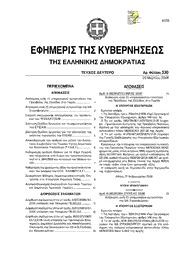
Greek Government Gazette: Part 2, 2006 no. 330
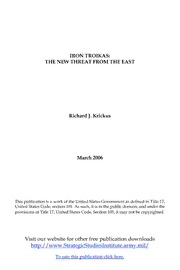
Iron Troikas - The New Threat from the East (2006)

Greek Government Gazette: Part 7, 2006 no. 916
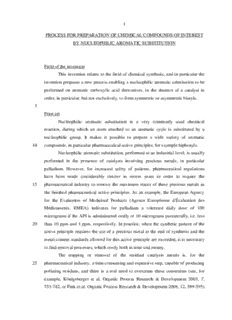
BY NUCLEOPHILIC AROMATIC SUBSTITUTION - Jacques Mortier
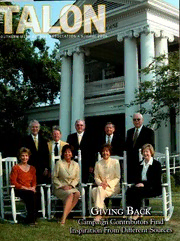
Talon, The
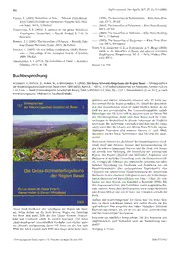
Buchbesprechung: Die Gross-Schmetterlingsfauna der Region Basel

NASA Technical Reports Server (NTRS) 20060051773: A Low Cost Spacecraft Architecture for Robotic Lunar Exploration Projects

Glossary
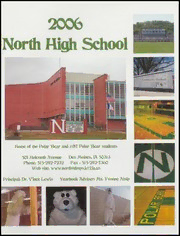
Polar Bear: 2006
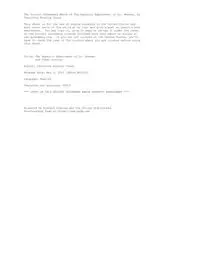
The Hypnotic Experiment of Dr Reeves by Charlotte Rosalys Jones
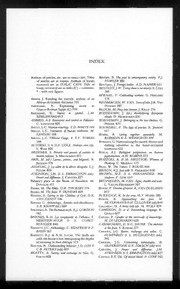
Man 1993: Vol 28 Index

Der gegenwärtige Stand der intralumbalen Therapie mit Ausschluß der Serumtherapie
